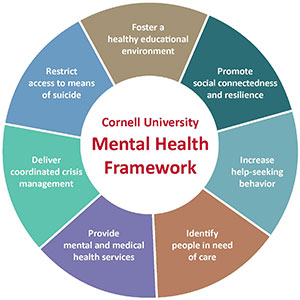Implementing an EHR With Lean Six Sigma
Change can be very difficult and unpleasant for some of us; others welcome change as…
 Change can be very difficult and unpleasant for some of us; others welcome change as opportunity for growth and new experiences. One change that is surely coming to almost all healthcare sites is the adoption and installation of electronic medical records, or electronic health records. The recently passed stimulus bill in the U.S. funds the use of electronic medical records; those that do not will suffer some penalties. After 2016 the penalty for Medicare will be 3%. Another impetus driving the adoption of electronic medical records is the NCQA inclusion of EMR’s in its criteria for primary care providers being designated a Patient Centered Medical Home.
Change can be very difficult and unpleasant for some of us; others welcome change as opportunity for growth and new experiences. One change that is surely coming to almost all healthcare sites is the adoption and installation of electronic medical records, or electronic health records. The recently passed stimulus bill in the U.S. funds the use of electronic medical records; those that do not will suffer some penalties. After 2016 the penalty for Medicare will be 3%. Another impetus driving the adoption of electronic medical records is the NCQA inclusion of EMR’s in its criteria for primary care providers being designated a Patient Centered Medical Home.
Being that EMR’s will be almost universally adopted, if you haven’t yet installed such a system I propose that you use Lean Healthcare or Design for Six Sigma techniques to implement the installation and incorporation of the IT systems. Those who don’t carefully plan will probably add complications and wasted efforts (muda) to their care processes and become very frustrated besides. Suppose, for instance, that you don’t include physicians in planning the implementation Global Health Problems And Solutions and the physicians using the new system don’t understand it well enough to use it effectively and become upset using it. What is likely to happen? They will avoid it as much as they can or use it inefficiently. This can result in poorer outcomes for patients as well as lost billing opportunities. What could have been an opportunity to increase the effectiveness of billing and improve income instead becomes a financial burden and a source of contention.
Such a scenario is not necessary though. Those who plan and choose well can reap significant benefits from the use of EMR’s. Achieving these benefits will require significant changes, such as in the way of logging patient data. Of course the data will now be electronically stored instead of on paper. The type of data being captured will also change. For instance, suppose that a physician making rounds at a hospital leaves a note for nurses that involves the drawing of a figure on paper, such as the position of a bedsore. For most EMR’s this will not be possible now. However, there will be room for comments to be added to the record. Hence, the physician will need to more descriptive now. Becoming adept at the new ways of entering data into the records will improve outcomes for patients and the caregivers.
Even better results can be had if the healthcare sites use teams to plan the implementation of the EMR. Let me suggest several steps that you might use. First, someone should be leading the overall effort of adopting and using the system. If your site has a Lean Leader, this is the best candidate. Otherwise, you might choose someone who is very familiar with quality improvement tools and techniques.
The leader should then form a team of representatives of those who will be using the system. In a primary care office I would include someone from billing, a physician, a nurse, an office manager and others who might be using the system. You might even want to include a patient if you intend to supply your patients their own records upon request, as suggested in the Institute of Medicine’s Crossing the Quality Chasm. Such a team will make better choices than a person working alone to get the system up and running.
I suggest that the team assume several responsibilities over its useful lifetime. First the team should choose the vendor and software. There are several hundred different EMR’s available, although not all will be certified by CCHIT, the Federal body in charge of certification. Choosing the right one will be difficult, to say the least. It is very likely that the team can choose one that fits the working style of the healthcare staff best; an individual choosing such a system is likely to rely on guidance from others who have already installed an EMR at their site. Following another’s advice will probably result in a poor choice for those at your site.
After the team has chosen a EMR it should be the first to be trained on using it. Since they are vested in it they are more likely to be the easiest to train in its use and also probably the most interested in making the best use of it. Once they are trained, they can then train others at the site in its use. Further, through the training they can decide which features of the EMR should be utilized by the office. Generally, most EMR’s come with many features; to use them all at startup would be overwhelming for new users.
Finally, this team can be used as the first responders to others who are first time users and who have questions about the software’s use. Rather than have the vendor be responsible for answering all questions, it will be much more effective if someone who is comfortable with the software at the site tries first as face-to-face instruction is generally more effective. If someone on the team cannot answer the question, they can contact the technical support of the vendor or the person with the question can.
Now that I have briefly explained the advantages of implementing Dietary Supplements Side Effects an EMR with a team let me add a few tips about EMR’s in general:
–EMR’s do not eliminate all errors. True, illegible handwriting will not be a problem anymore. However, if the EMR is not used effectively, it will create its own problems. Remember the old dictum from the early days of the advent of computers in the workplace: garbage in, garbage out.
–EMR’s are not like paper and pencil, as described in the opening of this newsletter. I read recently in Family Practice Management (March 2007) that one vendor described his EMR as the best possible paper and pencil record that could be achieved. A physician responded that is like stating we can use a very good horse and buggy to design an automobile. EMR’s are quite different in the way they capture data; for instance, there are lots of drop down menus to use in describing a condition of a patient or describing an action. There can also be many multiple choice questions to answer.
–It is very important that your site consider interoperability with other healthcare sites with which you do much business. For example, a primary care site will want to use an EMR that communicates effectively with the hospital(s) with which it commonly interacts.
In conclusion, we know that electronic medical records will soon be necessary at your healthcare site if you do not already use them. Implementing the use of an EMR can be very disruptive if the implementation is not well thought out and planned. The best way to implement the use of an EMR is through a team of representatives of those who will be using the EMR. The team will be responsible for choosing the right EMR, for being the first to be trained in its use so that the members can help other first time users become familiar with the EMR, and for helping troubleshoot problems with the use of the EMR at the site.








